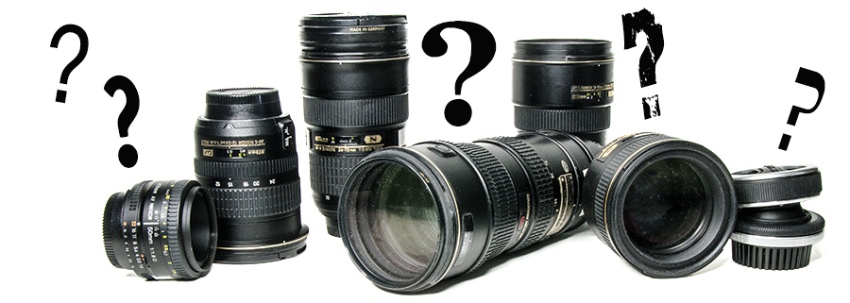

No question about it, we have a huge selection out there—zooms and primes, the camera brand lenses, third party offerings, and then the so-called “pro” quality and “consumer” quality lenses.
My goal here is not to discuss specific features and qualities of a particular lens but rather to look at a broader view of the strengths and limitations of certain types of lenses and how that affects our choices of what lens(es) to use. Discussion over who makes the better lenses is silly. They have all made some great lenses, fantastic lenses, and they have made some dogs.
Let’s take a look at the Professional vs. Consumer labels first. It is worth noting the difference is less about image quality than one might imagine—although there IS a difference. Take for example the Nikkor 18-55 and 17-55. Virtually identical zoom range, but the 18-55 is a variable aperture (f/3.5-5.6) and the lens mount is plastic. It is $196.00. The 17-55 is a constant f/2.8, it is metal, it is heavy. The price is right around $1400.00. Lens tests indicate the more expensive 17-55 does indeed give slightly better performance, but seven times better? Canon also has the 18-55 and 17-55 lenses with a similar price difference.
So what is worth seven times the price of the 18-55? The 17-55 is built like a tank. It is built to take daily abuse that would likely cause the less-expensive 18-55 to fail within a relatively short time. The constant f/2.8 is two stops faster than the 18-55 at maximum zoom. This can be REALLY significant for a studio photographer that wants to shoot at f/4, has the lights set for f/4 and does not want the lens to become an f/5.6 lens just because he or she wanted to tighten up the composition.
Another difference is in the zoom range offered by the consumer lenses as opposed to the professional lenses. The consumer lenses regularly offer zooms in the 5x, or even 10 or 11X where the more expensive zooms are generally in the 2X and 3X range. The reason is that to maintain that constant aperture, maximum quality, and minimize distortion, going much beyond a three times zoom gets very difficult. On top of that, if we think the $1600.00 for a 24-70 f/2.8 is steep, imagine if that were to be a 24-120 AND keep the f/2.8. (That is why the 24-120 is an f4.)
On to the Prime vs. Zoom issue. There is no question that up until 15 years ago or so, the fixed focal length lenses (known as prime lenses) were significantly sharper than variable focal length lenses (zooms). As was mentioned in the previous paragraph, this was just a function of lens design as it was far easier to design all those sophisticated internal glass elements to be sharp at ONE focal length than on a lens that varied that focal length. Recently, the advances in computer-designed lenses have narrowed that quality gap by a huge margin. So much so, that several of the professional-grade zoom lenses are comparable in sharpness to their prime siblings. The 24-70 and 70-200 offerings from both Canon and Nikon come to mind.
The Nikon 28-300 f/3.5-5.6– a whopping 10.7X zoom actually produces amazingly good images over its whole range. There is significant distortion in places—both barrel and pincushion—but many modern cameras allow settings that minimize this and of course there is distortion correction available in Photoshop. For many people, this is the only lens they will ever need. It also has VR (IS in Canon) which makes the f/3.5-5.6 aperture not such a big deal. The variable aperture and distortion issues probably do not make lenses in this category great lenses for the working professional, but they are superb for the average hobbyist/amateur. Having said that, Canon’s 28-300 f/3.5-5.6 L IS USM lens also has distortion issues and is just under $3,000 vs. the Nikon version at right around $1,000.00. Granted, the Canon is one of the “L” lenses, denoting Canon’s better lenses.
Several lenses from Canon, Nikon, Sony and other manufacturers have similar moderate range zooms. Everyone seems to have a 55-200, and a 70-300 and those all can produce good images.
So much for the overview, how about taking a look at lenses for specific purposes. If you are reading this blog, chances are pretty good that you are a portrait photographer. You may do other work as well, but I would guess a significant portion of your business is portraits—high school seniors, families, babies, and maybe some headshots are in your specialty mix. Sports Photography is a different discipline and if we were to address that we would have to include lenses 300mm and longer, but we will stick to the lenses 200mm and shorter.
The question often asked is, “What lens should I use for portraits?” Well, depending upon the look and/or effect you are going for, ANY lens can work. However, when we think about the more or less “standard” portrait—let’s say anything from full length to head and shoulders—we really are going to be working in the moderate wide angle to medium telephoto range. This means lenses in the 35mm to 180mm for most of what we do.
Why lenses in that range ? Because depending upon how much of the subject we include in the frame, that range will give us the most flattering perspective. For that full length image, something around 35 to 50 or so will work great. Three quarter view would be fine in the 50 to 80 range. From the waist up we might go for 80 to 135 and for the head and shoulders shot something in the 85 to 200mm range might well be the choice. These are NOT hard and fast rules, but just general guides. Certainly we could use a 200mm lens for a full-length portrait, but we would have to shoot it from so far away that it might be impractical.
But WHY are those focal lengths giving us flattering perspectives of the person? It is not JUST the lens—it is where the particular focal length positions the camera. For the head and shoulders image, if we were to use a 35mm lens to fill the frame we would be so close that we would distort or subject’s face. A 24mm would be even worse! But if we used something in the 100mm+ range, it would force us to move back until the perspective was more natural—definitely more flattering
One of the best examples of focal length on facial perspective is from Stephen Eastwood. Check out this link and then try the experiment yourself to see why portrait lenses tend to be 85mm and longer. But as was mentioned earlier, ANY lens can be used at any distance—the perspective you get may be just what you are looking for.
Distortion examples: http://stepheneastwood.com/tutorials/lensdistortion/strippage.htm
So if you want to take your subject’s portrait with a fisheye lens from 6 inches away, and think she will ever speak to you again, go right ahead.
